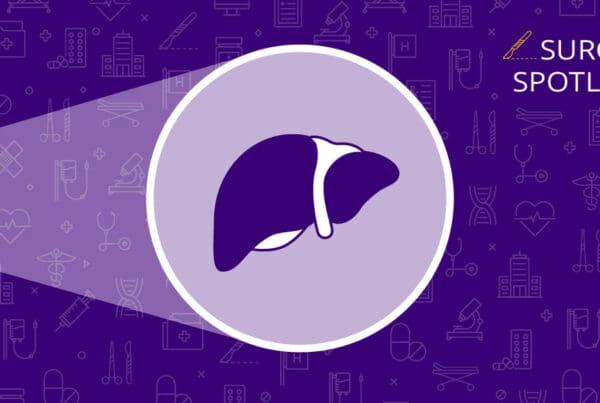HIGHLIGHTS | Simulation training improves patient care
- Simulation training lets providers test out personal protective equipment.
- They do this while intubating a pretend patient.
- This way, they can get comfortable with the gear before using it for real.
- The training helps boost providers’ confidence.
- It also makes them aware of any problems they need to fix, which improves patient care.
During the COVID-19 pandemic, every little thing that can help frontline providers feel supported and confident in their skills is a good thing.
That’s the philosophy behind a simulation training that helps emergency medicine providers practice intubating COVID-19 patients before they do it for real.
“With the simulation, people are able to practice skills they’re otherwise trained to do but in equipment they don’t normally use, like a powered air purifying respirator (PAPR),” says Elizabeth Rosenman, MD, director of the simulation program for the emergency medicine department. “These particular trainings were less about learning a new skill, and more about providing reassurance and increasing confidence.”
Practicing with a PAPR
Providers wear personal protective equipment, such as face shields and surgical masks, during regular intubations. But intubating a COVID-19 patient kicks things up a notch.
Following UW Medicine standard practice, providers intubating a COVID-19 patient typically wear a PAPR, which provides extra protection from aerosols.
Though emergency medicine providers are already trained in how to safely put on, use and take off various types of protective equipment, many of them haven’t had to use a PAPR in a real-life situation.
In the training, providers get a chance to experience how the PAPR hood and shroud make it harder to hear colleagues and be heard by them, plus how it impacts their own visibility of the pretend patient.
They also get to practice checking the battery level, attaching and feeling the weight of the hose, and feeling what it’s like if the airflow gets turned off.
“A PAPR is not what we’re standardly trained on or use, but it does need to be put on, worn and taken off correctly to be effective, and it changes the way you’re working,” says Emily Bartlett, MD, a chief resident in emergency medicine at the UW School of Medicine who took the training.
Providers who take the training also get to practice intubation using a variety of tools for different clinical scenarios. One such tool, the video laryngoscope, allows the provider to visualize the airway while maintaining a slightly greater distance from the patient’s face. This technology is helpful with COVID-19 patients because distancing reduces exposure to aerosolized particles.
Every second counts
In most scenarios, a provider can take their time with intubation to make sure everything goes according to plan. That hasn’t always been the case with COVID-19 patients, however.
Many patients with COVID-19 who are severely ill are also hypoxic, meaning their body can’t get as much oxygen as it needs to function. Even in patients who have been given oxygen, their levels can drop quickly when providers perform other critical procedures such as administering sedation or other medications, Rosenman says.
Because of this, it’s important to get the patient intubated as quickly as possible.
“There isn’t a lot of room for delay, or for multiple attempts, so you really want experienced, confident providers doing the intubation, because you just have less time than you would otherwise,” Rosenman says.
The simulation training gives providers the chance to build that confidence and practice intubating on a quicker timeline, so they know they can do it just as quickly when they treat an actual patient.
Expanding the training
Initially, the plan was to provide the training for just attending physicians, but residents were eager to be involved, too.
Rosenman has held more than 10 trainings for residents, attendings and other faculty. Some of the trainings have been held at the WWAMI Institute for Simulation in Healthcare (WISH) labs.
For other trainings, Rosenman has taken her show on the road by going directly to the emergency department.
“We take the mannequin over to the clinical areas so people are working in their natural environment. You learn so much about the processes and team dynamics that way,” she says.
She hopes to do more trainings this way in the near future throughout the UW Medicine system.
Social distancing and supply management
Rosenman has worked to make sure people who take the training practice social distancing as much as possible. She has also made efforts to use as few supplies as needed to do the training successfully.
People who take the training have been using expired surgical gloves to save the good ones for patient care and using reusable surgical gowns instead of disposable ones. They haven’t used any face masks or shields due to those items being in high demand elsewhere.
Luckily, the PAPRs Rosenman acquired for the training can be cleaned and reused. Still, coming by the needed training supplies continues to be an issue — but one that Rosenman finds creative workarounds for.
“In the first sessions, I had four PAPRs to use; in the most recent sessions, I had one. Now we rotate through using it and people can take turns,” she says.
Using simulation to improve patient care
Giving providers a chance to practice intubating a COVID-19 patient wearing a PAPR doesn’t just provide reassurance for them — it also helps improve patient care because doctors get a chance to see what works and what doesn’t.
“As many times as you run the simulation, you will always find something to change,” Rosenman says.
Of course, that doesn’t mean running endless simulations is a good idea. Usually there’s a point after a few tries where the team will work through any major kinks and feel confident to perform the procedure in real life, Rosenman says.
For Bartlett, being able to work through a high-stakes situation in a safe environment makes all the difference when it comes to her commitment to patients.
“In the era of COVID-19, we’ve received a lot of protocols and changing practices daily, and every day is different. Simulation helps you get comfortable with that process ahead of time and helps so you can just do what you need to do in the moment,” she says.


